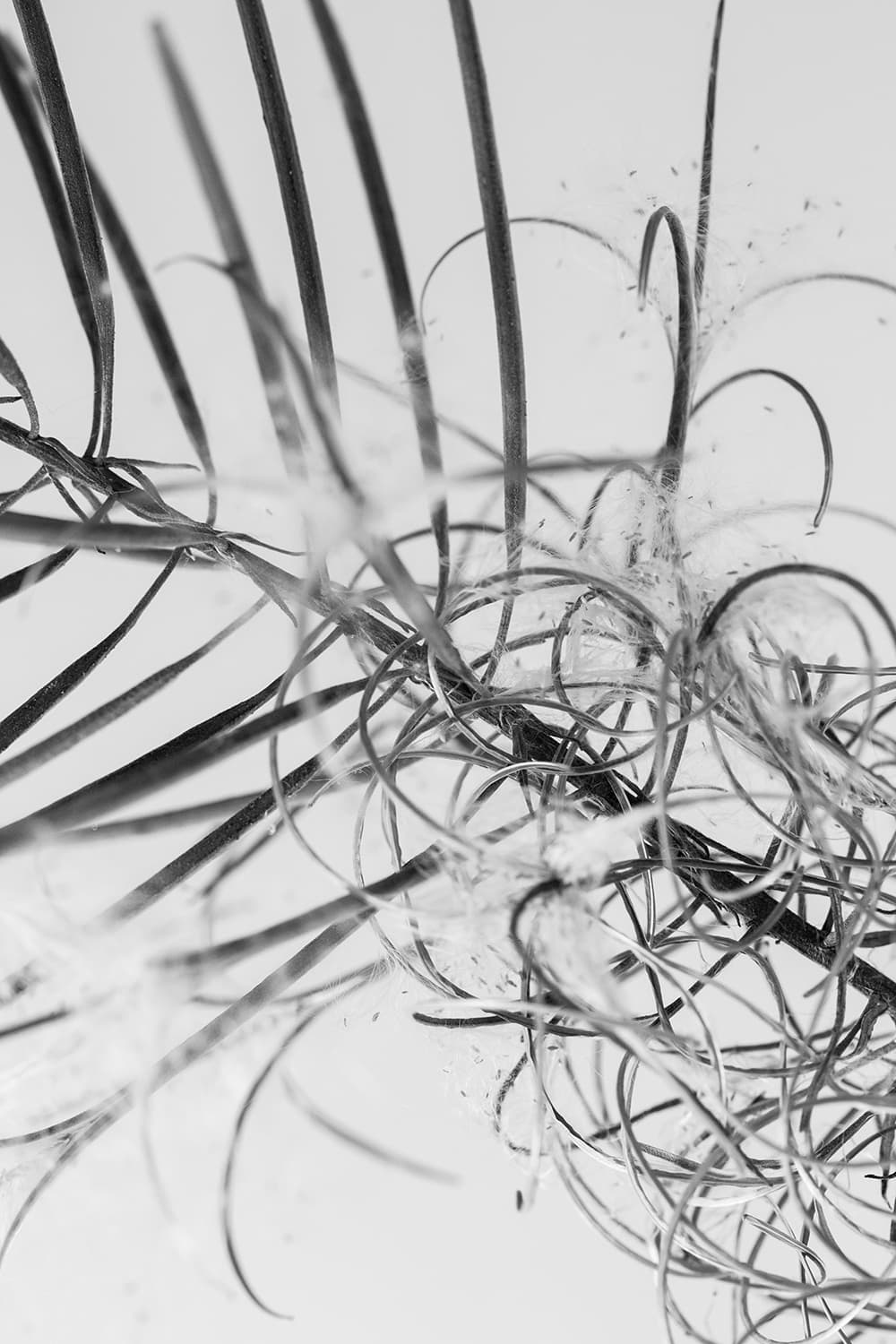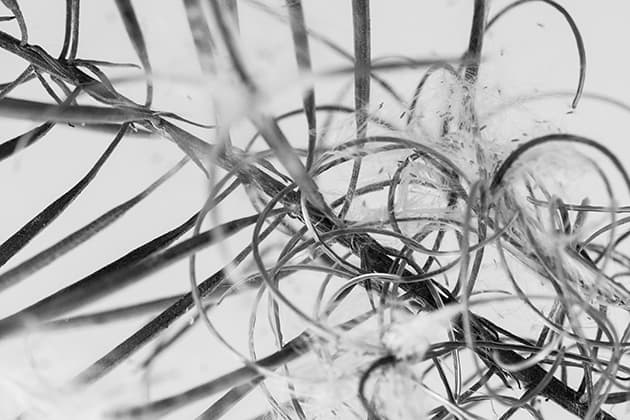
The mono conversion emphasises the tones and details.
You don’t have to wait until spring to venture outside and put your macro skills to the test. Even the simplest of subjects, such as winter grasses and weeds, found in fields and parks, can create beautiful artwork.
By using a macro lens you can get in close to reveal beautiful, delicate details that would normally go unnoticed. Focusing on just a small section of a plant’s structure can create wonderful abstract compositions to draw the viewer’s eye in.
You’ll be amazed by the variety of wild grasses and weeds to be found on your doorstop, even at this time of year. What these plants lack in colour is certainly made up by the intricate details and texture.
- To ensure your images are free from distractions, shoot your subjects against a white background. A plain wall or piece of white card will do the trick. If you like natural light, shoot near a big window with diffused sunlight.
- If you prefer to use flash, position an external flashgun off to one side of the set-up. To avoid garish-looking shadows, diffuse the flash by firing it through a reflector. This will soften and spread the light.
- With macro photography, depth of field is restricted the closer you are to your subject, so start with a mid-range aperture of f/5.6-f/8. For a more abstract composition, set a wide aperture for creative blur.
- In post-processing remove all colour with a black & white conversion. With the colour removed, the details are so much more apparent. To enhance the tones and texture, boost the contrast too.







